Winter escapade in Akan-Mashu National Park
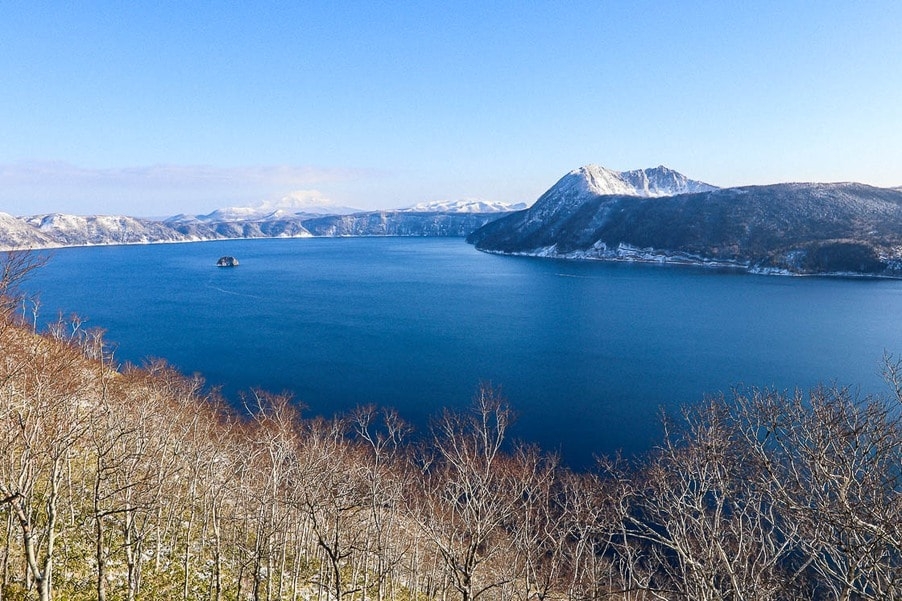
View of Lake Mashu from the observation deck
Visitors who would like to experience a winter wonderland should definitely consider a visit to one of Hokkaido's national parks in the winter period between December and April, with the peak of the cold season starting from end January through February. While any one of the parks is a good choice, perhaps one that offers an assortment of fascinating landscapes is the Akan-Mashu National Park.
The Akan-Mashu National Park is located inland in the middle of eastern Hokkaido. Consisting of three caldera lakes: Lake Mashu, Lake Kussharo and Lake Akan, and a number of volcanic mountains, the national park offers nature lovers volcanic terrain and forests that host an abundance of wildlife and flora, including some that are native to the area.
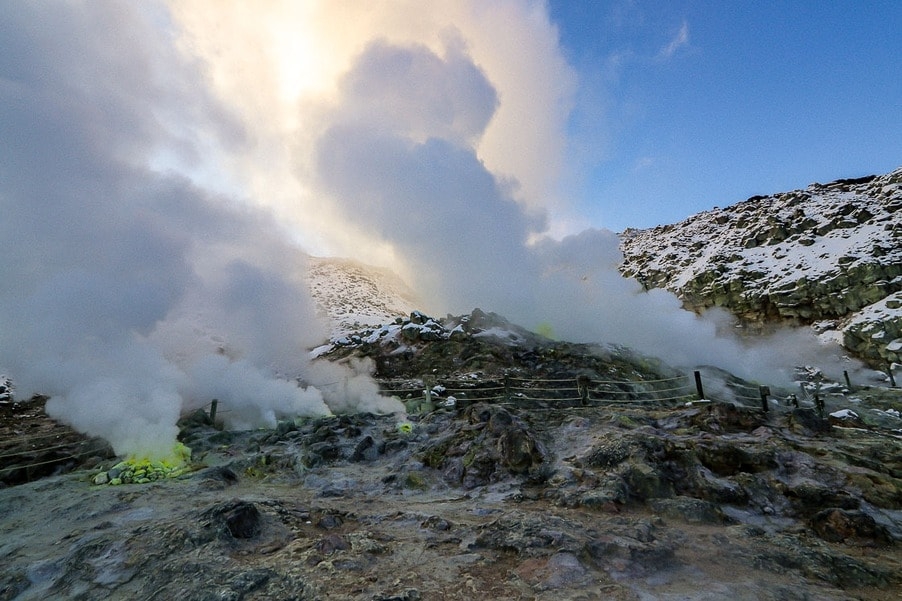
Smoking steam vents on Mt. Io, Sulphur Mountain
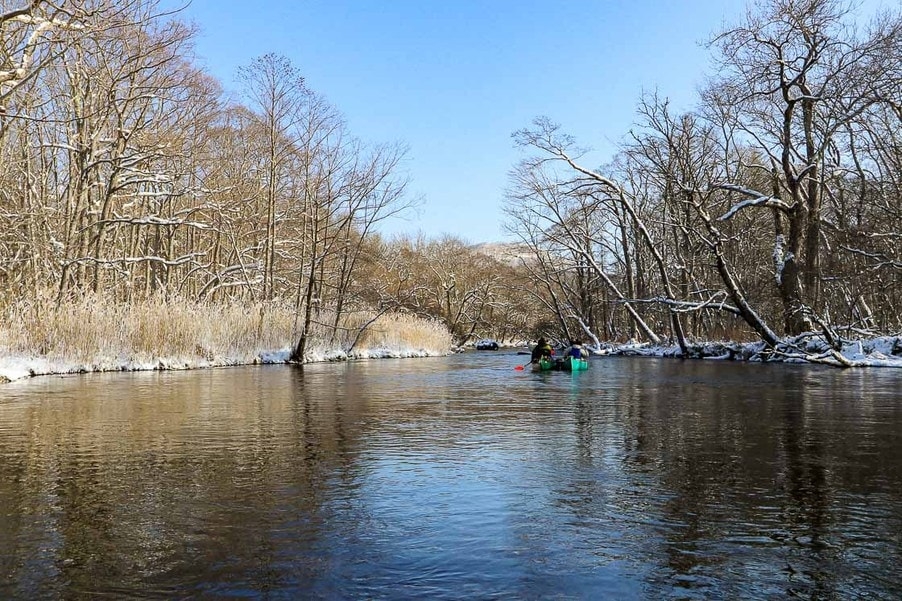
Canoeing down the Kushiro River
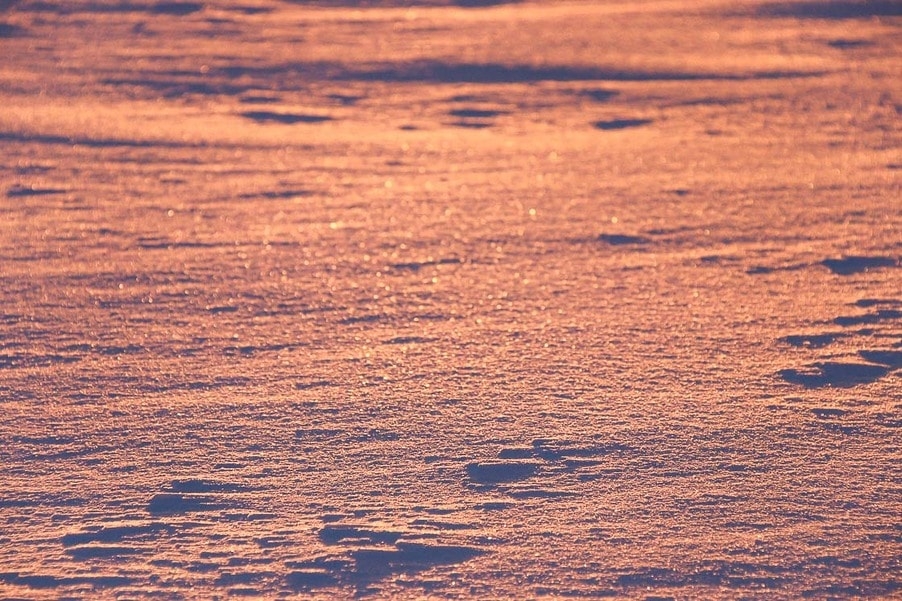
Morning rays on untouched snow in Lake Akan
This trip would be perfect for those who want to do a side trip while holidaying in Hokkaido or as a long weekend tour from the major cities of Tokyo or Osaka, which was what I did. Note that a rental car is recommended as public transportation is virtually non-existent.
Day one
Located inside the Akan-Mashu National Park, the smell of sulphur permeates Kawayu Onsen town, and the acidic waters are said to soothe and heal a variety of ailments. There are a number of accommodation facilities with their private baths as well as a public bath in town. Staying overnight in a hot spring town was a great place to kick off my trip, and I was looking forward to the activities the next day.
I woke up bright and early on Day 1, and got started on my incredible trip. I could not have asked for better weather; the skies were blue, and it was forecast to be sub-zero temperatures all day, which raised my expectations for seeing some wintry landscapes.
My first stop was Mt. Io, an active volcano with sulphurous vents, a five-minute drive from Kawayu Onsen. The steaming vents were visible from a distance against the blue sky, and I was excited to be able to walk right up to them. It is not very often that one gets a chance to walk right up to steaming sulphur vents. It seems that outside of winter, eggs that have been cooked by the steaming vents are sold in the nearby shops.
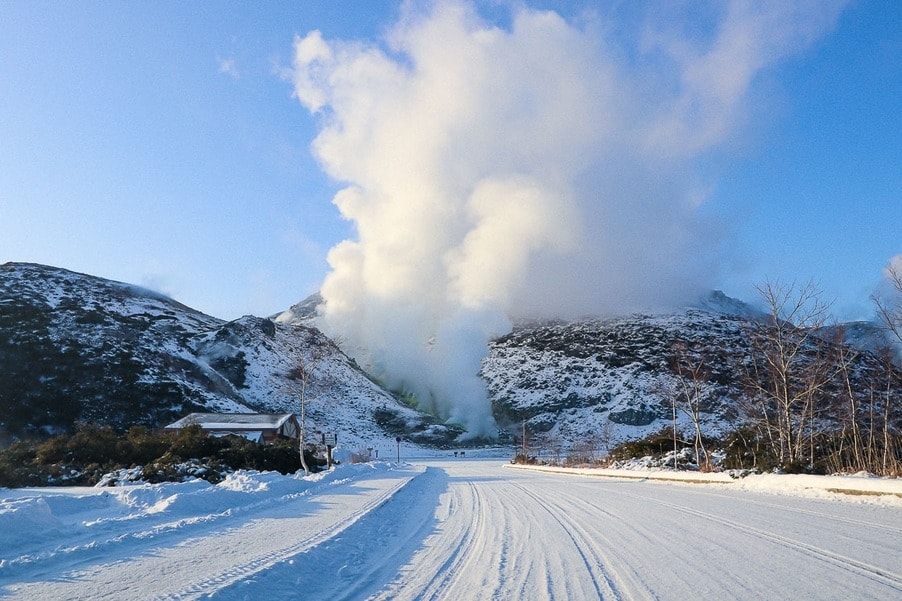
The road to Mt. Io; huge clouds of steam from the vents can be seen from far
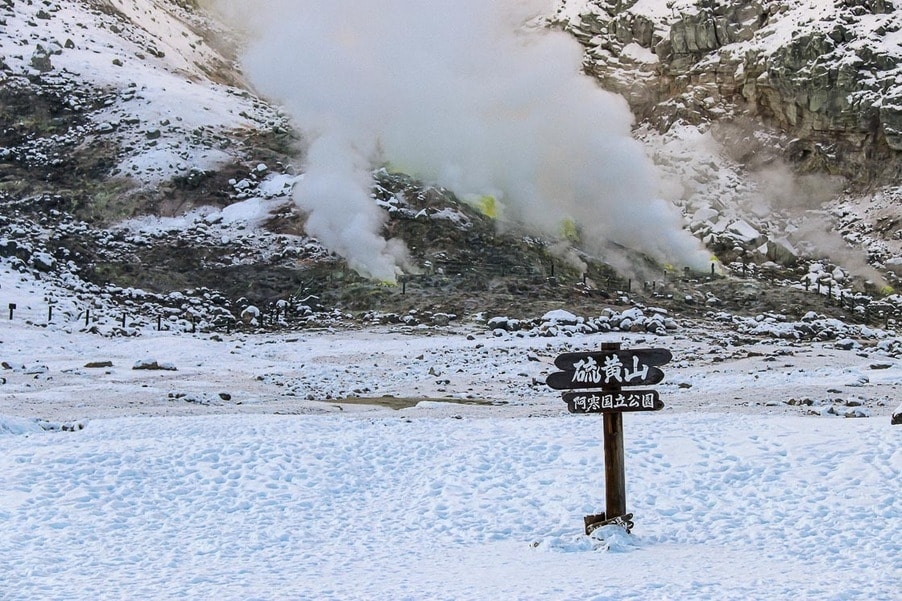
All I had to do was to walk across the snow
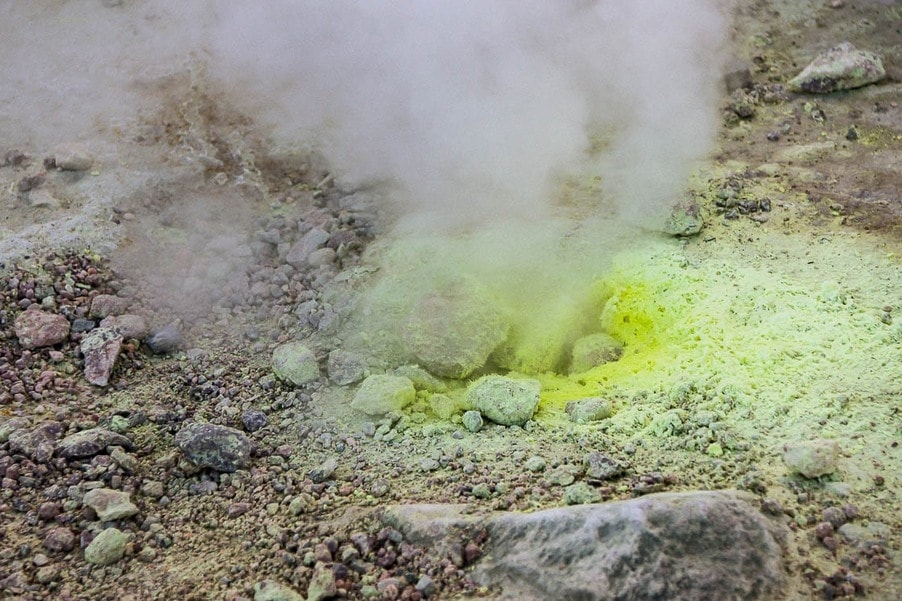
Sulphur deposits around the mouth of the vents
I was treated to a snowy landscape, and stayed for a while taking in the views. As I was there pretty early, for a brief moment, it truly felt like I had uncovered this new world and made humanity's first ever footprints in the pristine snow.
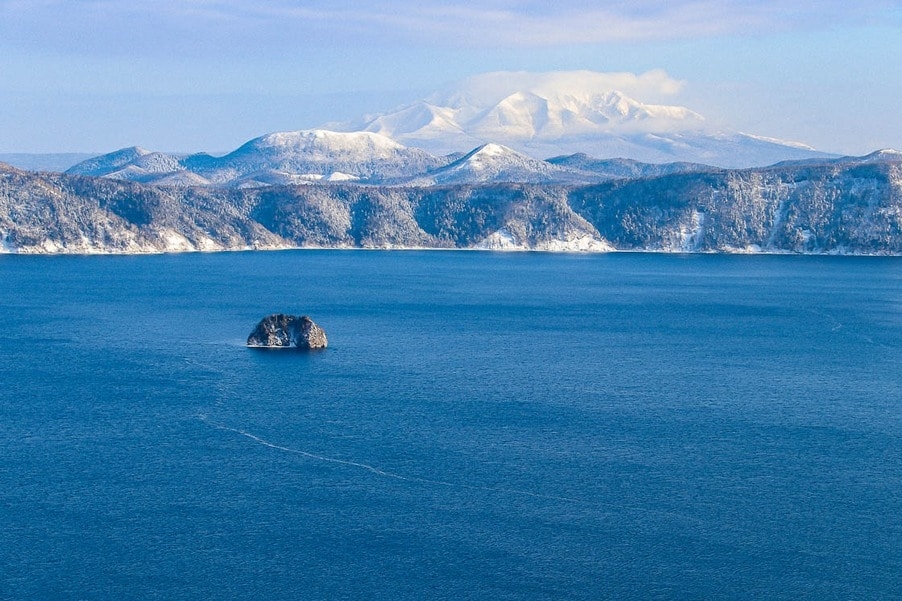
Stunning views in the morning
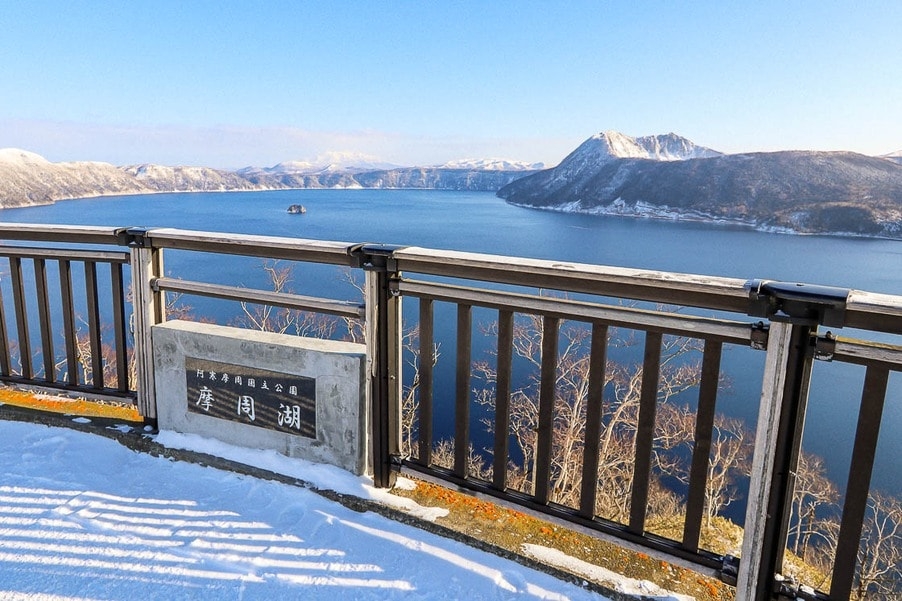
View from the observation deck
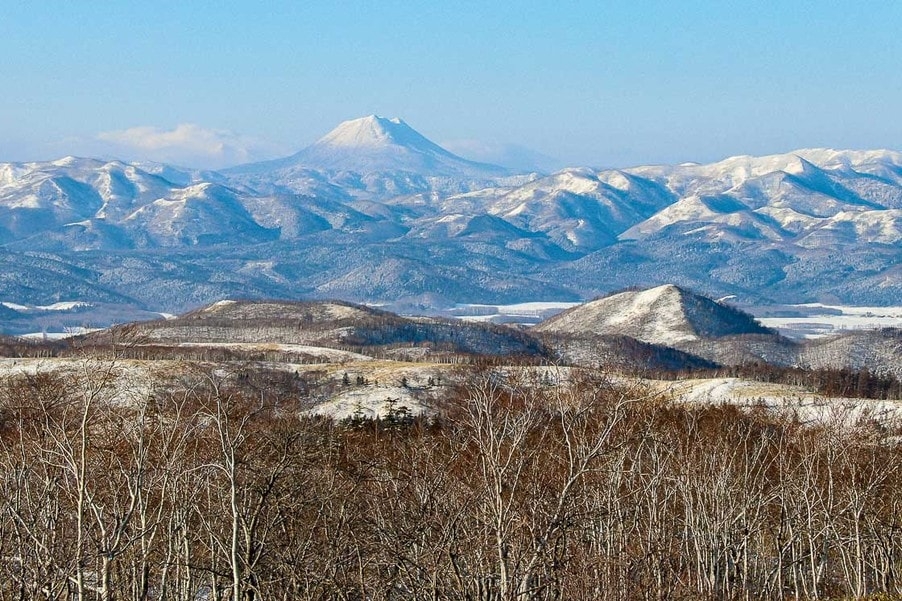
Snow-covered Mt. Oakan
I arrived at the departure point and straight to the pre-departure briefing. All participants are required to wear a drysuit, warm outer layers and boots fit for the sub-zero temperatures, which were all thankfully provided by the tour company. It was not long before we were all dressed up and ready to rock the boat.
The canoe activity was hands down one of the best experiences I did this trip. We departed from Lake Kussharo, the largest caldera lake in Japan and the largest of the three lakes in the Akan-Mashu National Park, before heading down Kushiro River and visiting one of its sources en route. My English-speaking tour guide was also extremely knowledgeable about the local flora and fauna, and pointed out some of the phenomena that can only be seen in the winter. During the two hour tour, I got to check of almost all of the natural formations I was hoping to see, specifically, hoarfrost and frost flowers.
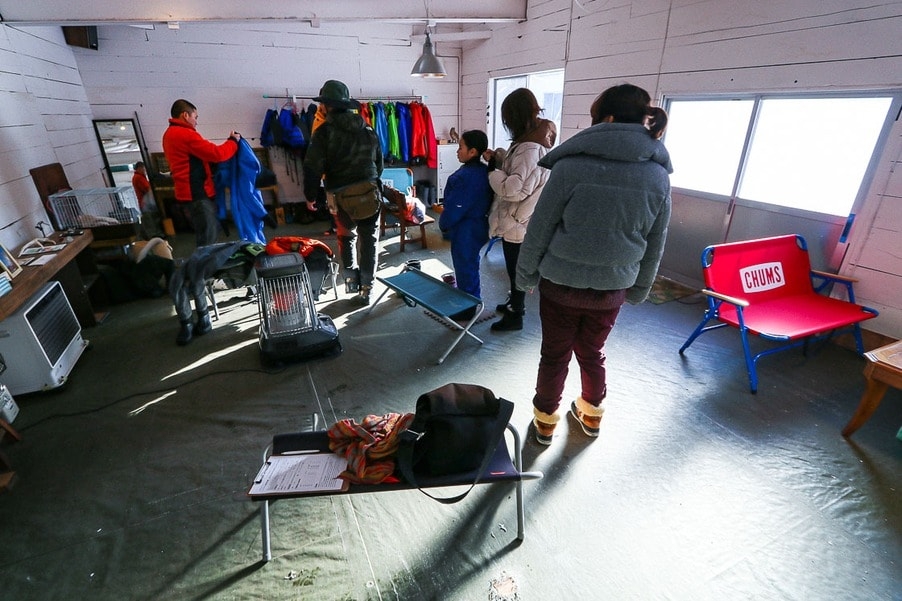
Gearing up before we rumbled
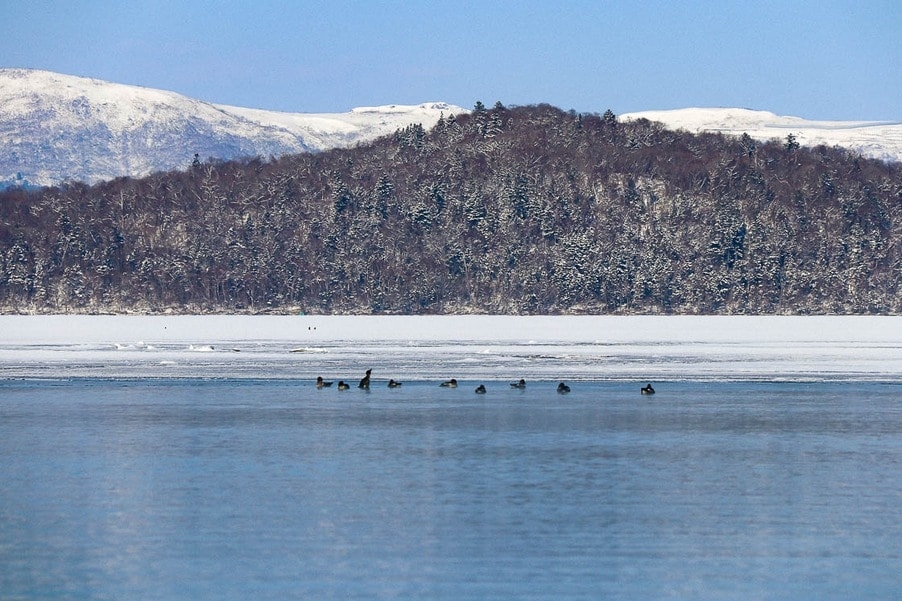
Ducks chilling out in Lake Kussharo
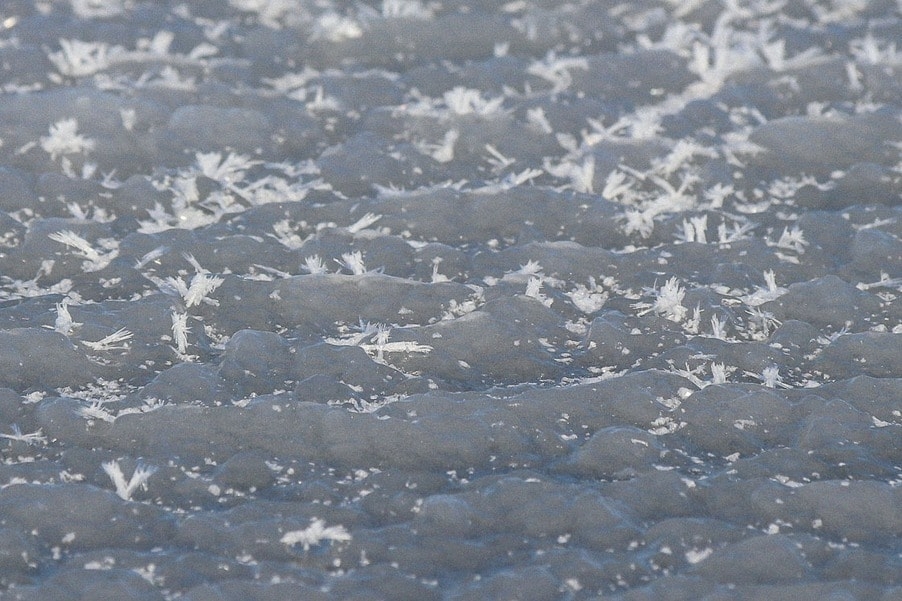
Icicles developing on the frozen surface of the lake
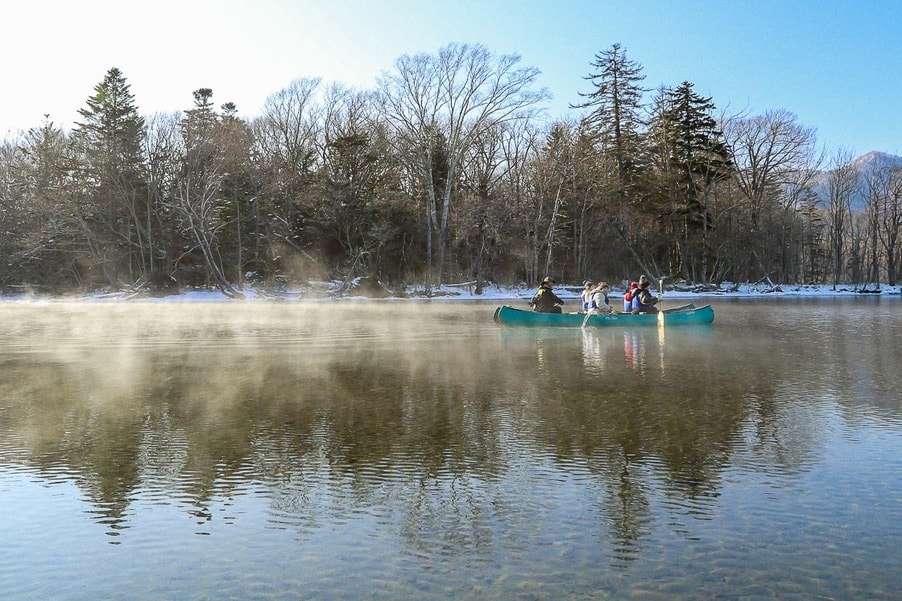
Steam fog rising above Lake Kussharo. What a lovely way to start the day!
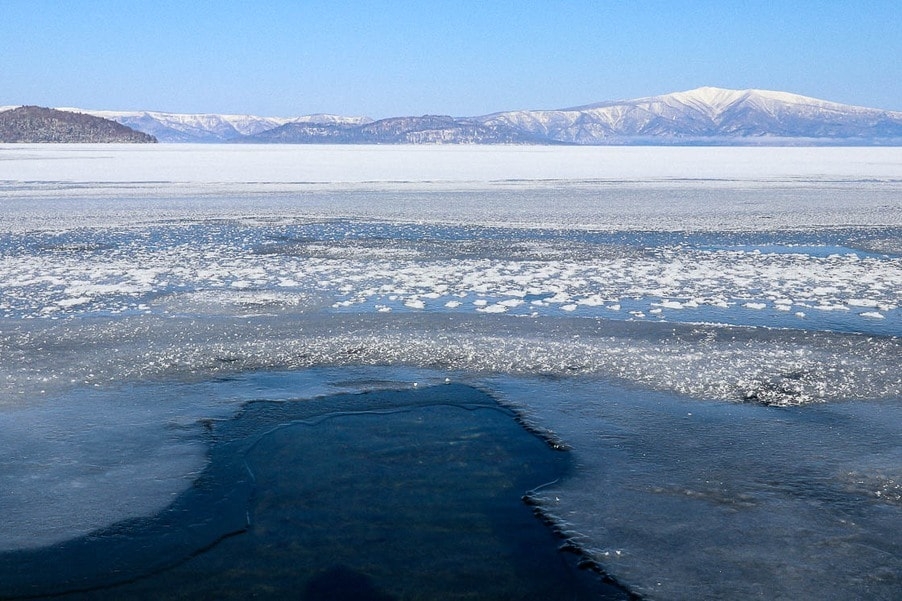
The different stages of water and ice on the surface of the lake

Change in landscape once we crossed under the bridge and into the Kushiro River

Saw an eagle flying high. Seems that eagles are commonly seen in the area, and it's not a big deal to see one (unless you are from the city, like me)
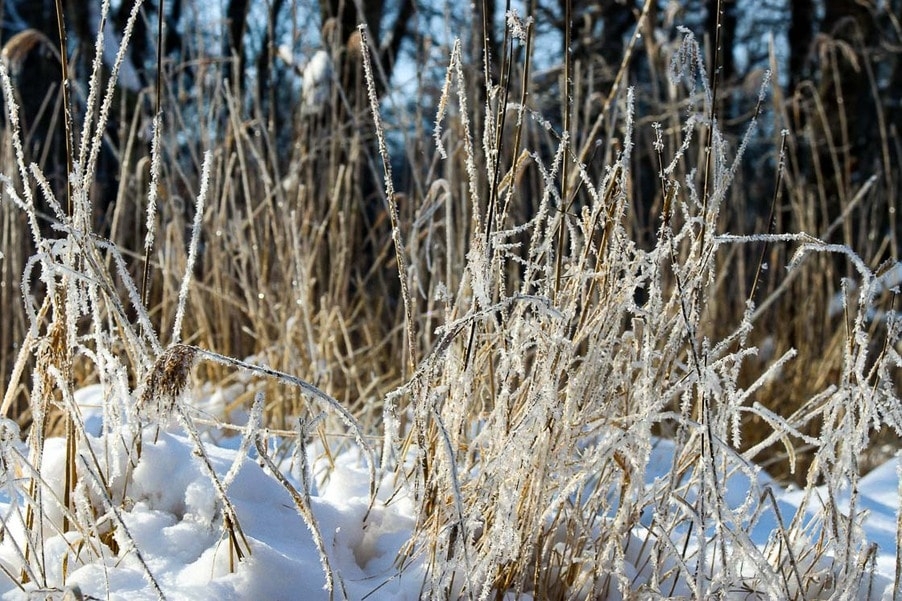
Hoarfrost on the vegetation
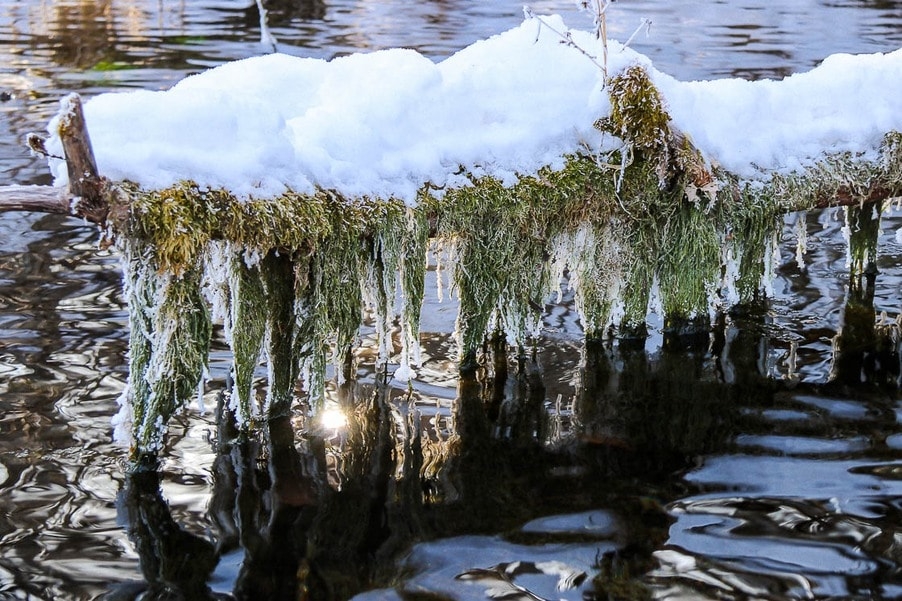
Such moss only grow where the air is clean, and here they are frozen in the winter
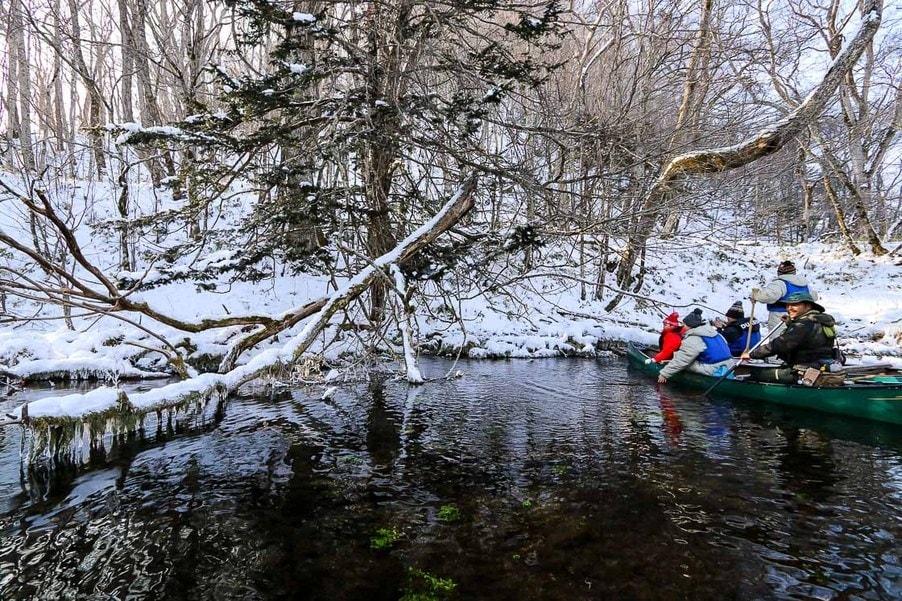
This area is known as Kagami-no-ma, where the water acts like a mirror in the river
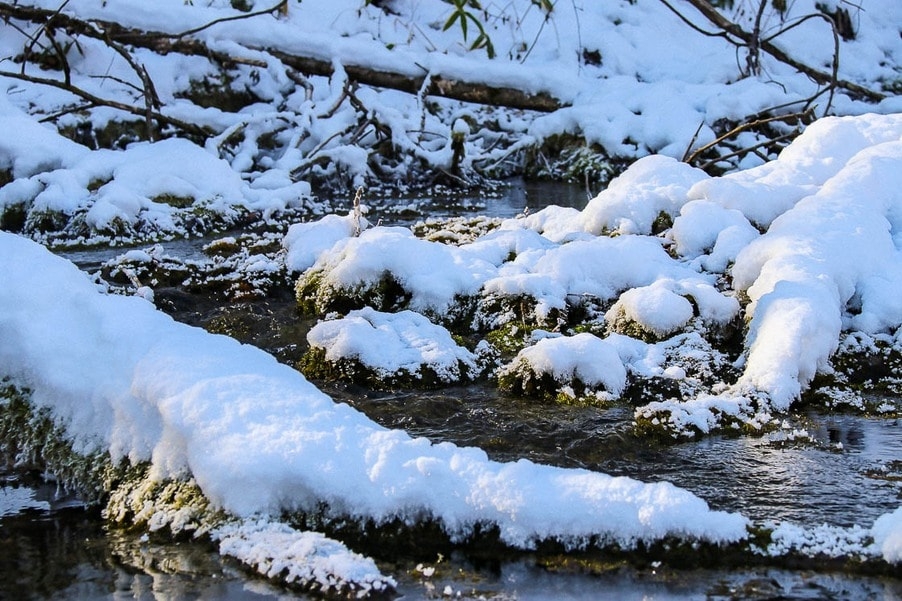
It is said that this bubbling brook of snow melt is one of the sources of the Kushiro River, and the water around is warmer than the surroundings
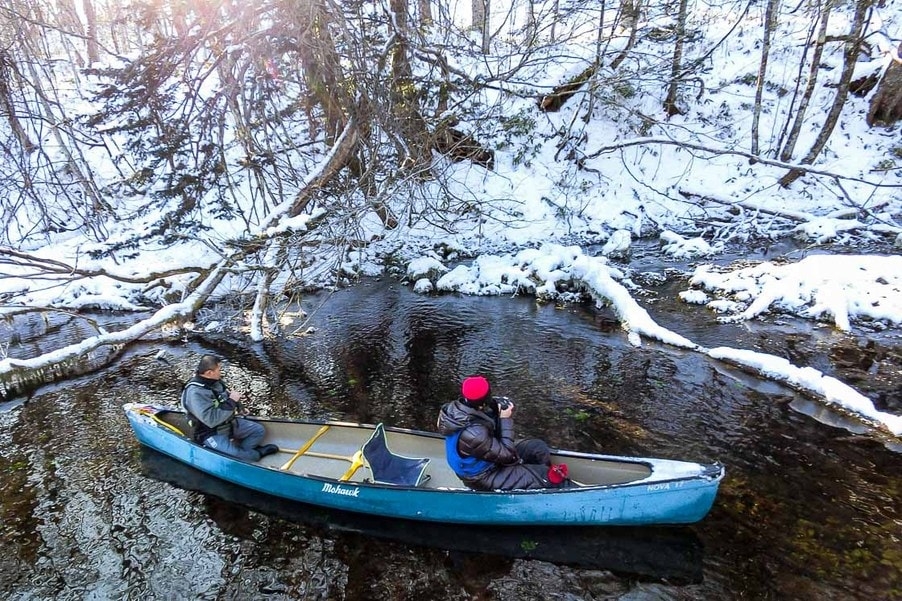
The author getting a shot in Kagami-no-ma
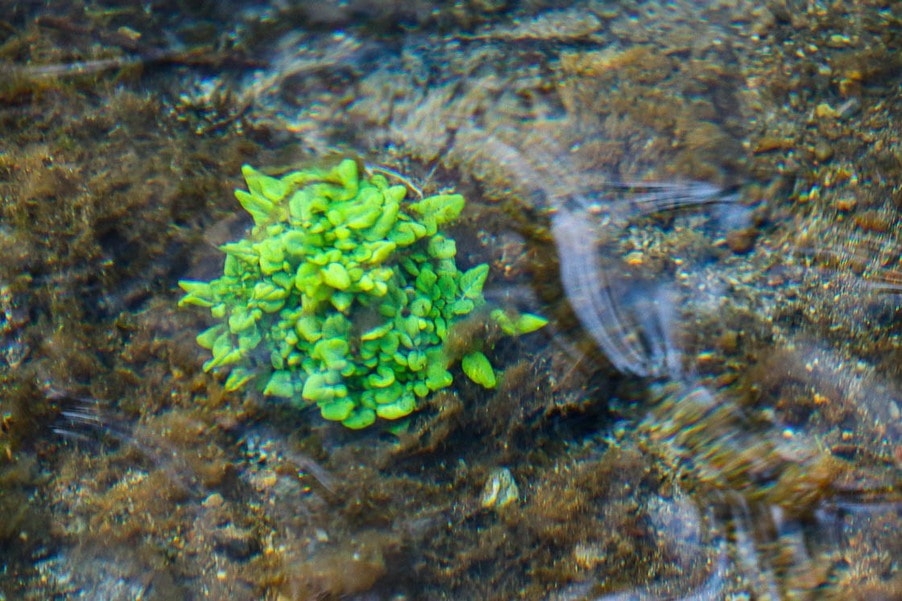
Extremely clear water
Before leaving the Lake Kussharo area, I made a pit stop at Kotan Onsen, an outdoor hot spring bath not far away. The public onsen is well known for its view of Lake Kussharo and Whooper swans that converge in the warm waters next to the bath in the winter. As the bath is completely open, it is recommended that visitors wear bathing suits when going for a soak.

Exterior of Kotan Onsen
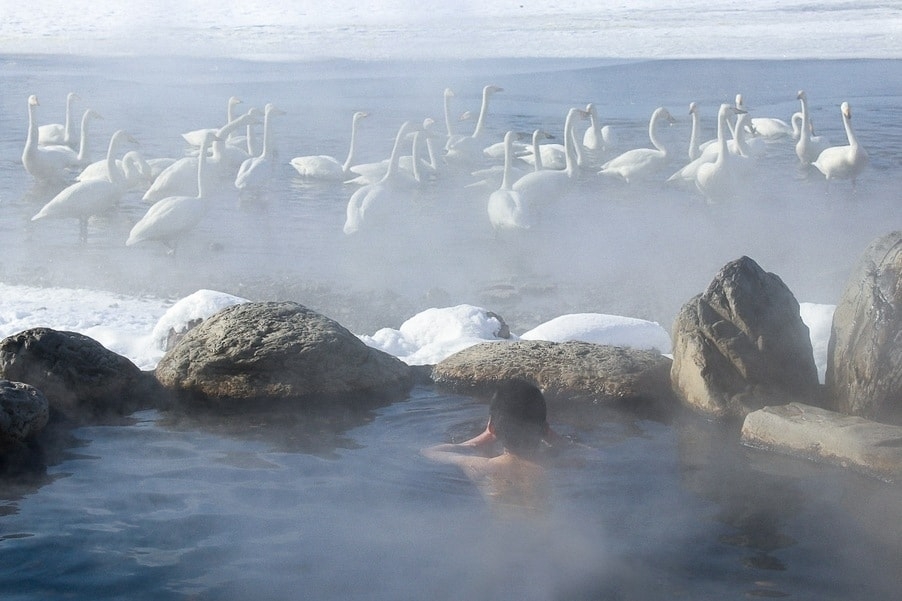
Enjoying a hot bath and the view of the Whooper swans

Hot spring water ensures a warm bath for the swans in that part of Lake Kussharo
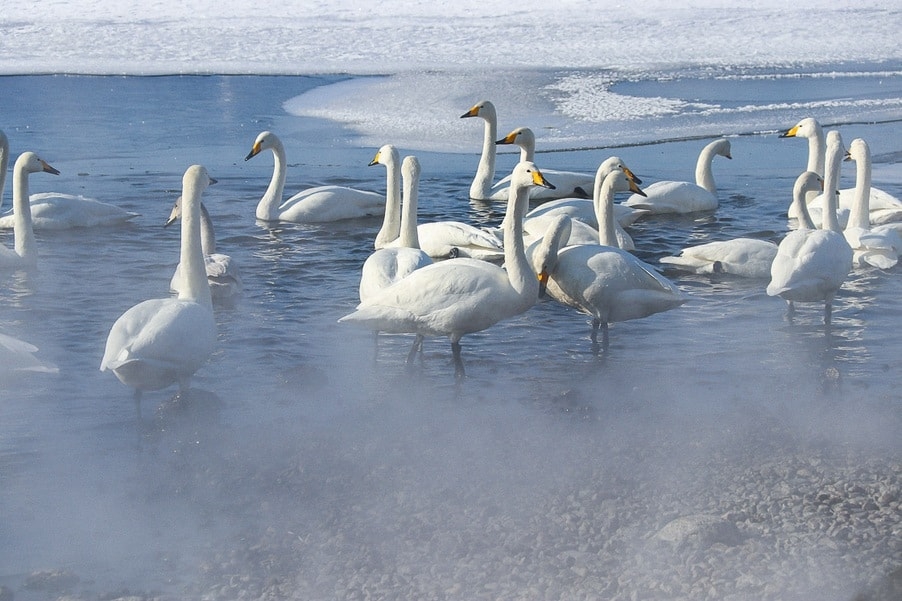
You can get pretty close to the swans
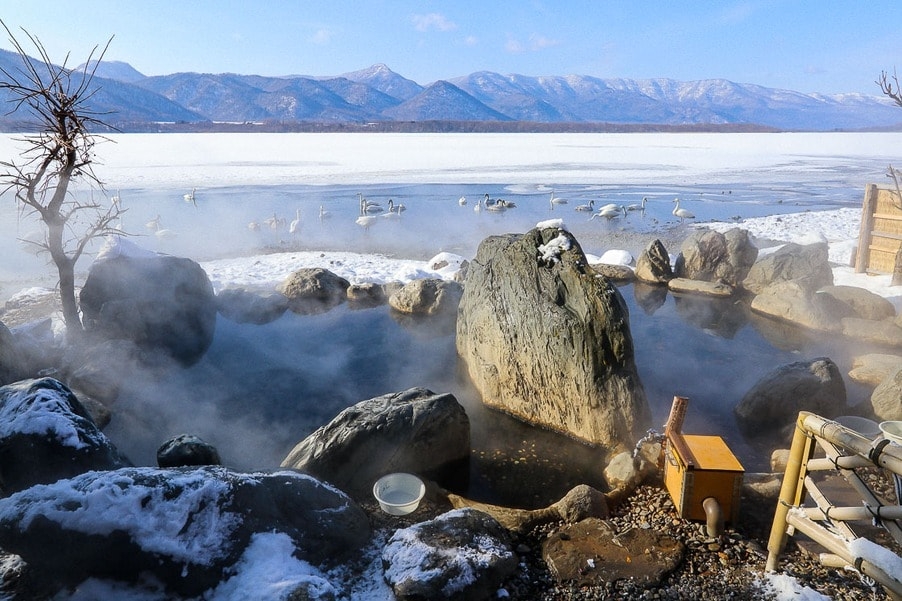
Bathing suits are recommended as the bath is completely open
The town is built on the southern shores of Lake Akan, and it is home to the Akanko Ainu Kotan, one of the last few surviving aboriginal Ainu villages in Japan. It was my first real experience with Ainu culture, having read and heard so much about it. I found most of the village experience to be fairly mainstream, with the exception of the Ainu Life Memorial Museum, a small museum which recreates a traditional house, and the Akanko Ainu Theater <Ikor>.

View of Mt. Oakan along the drive to Akanko Onsen
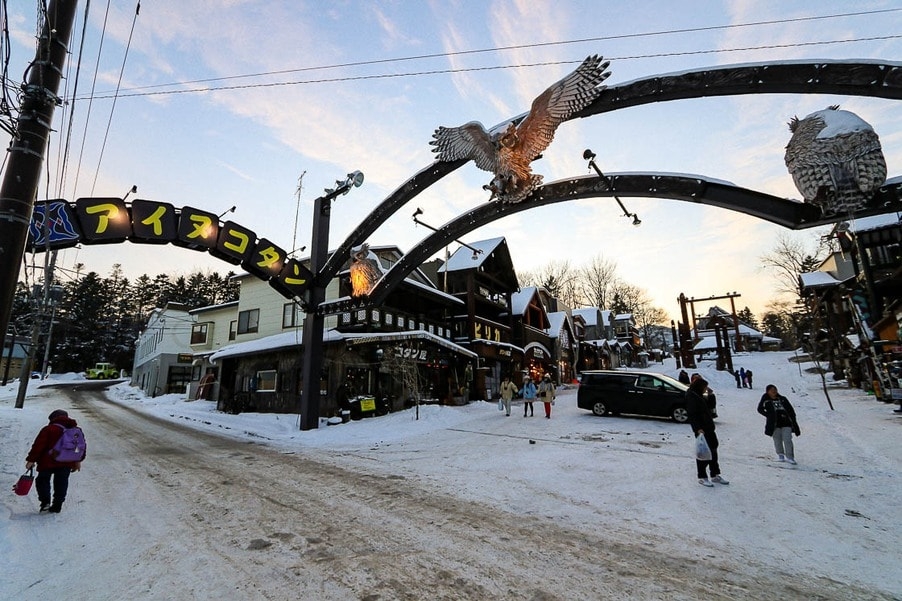
The Akanko Ainu Kotan in Akanko Onsen
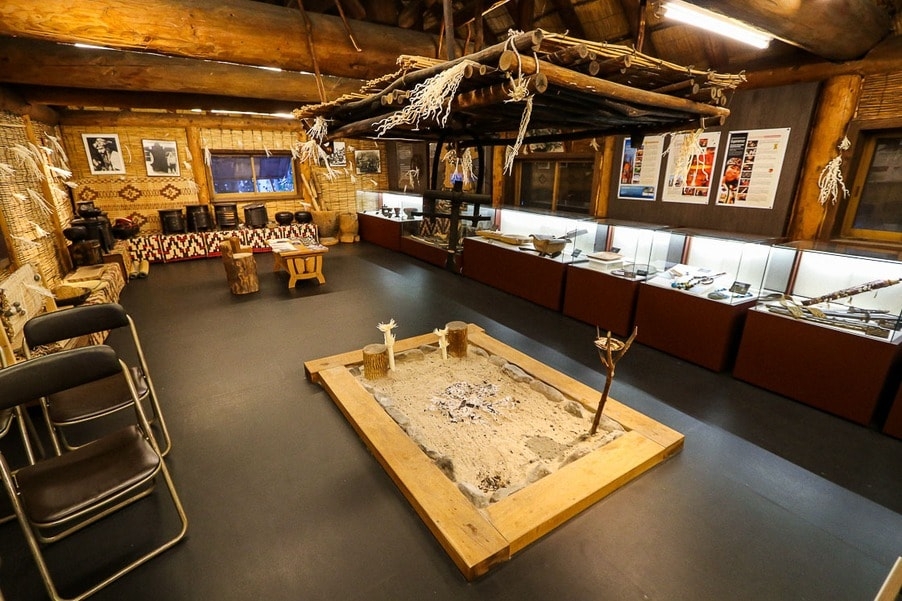
Inside the Ainu Life Memorial Museum
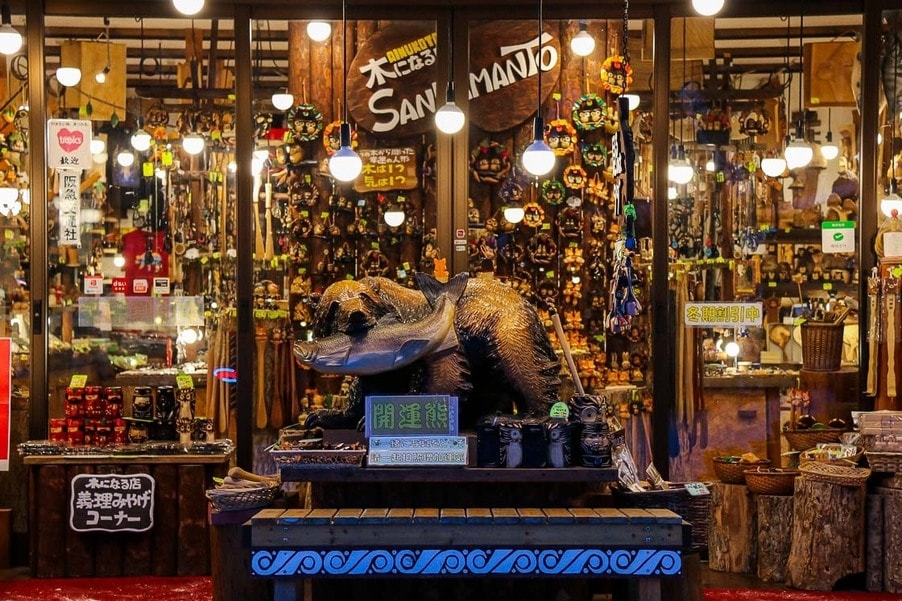
A bear with a salmon in its mouth has become a symbol of Ainu culture
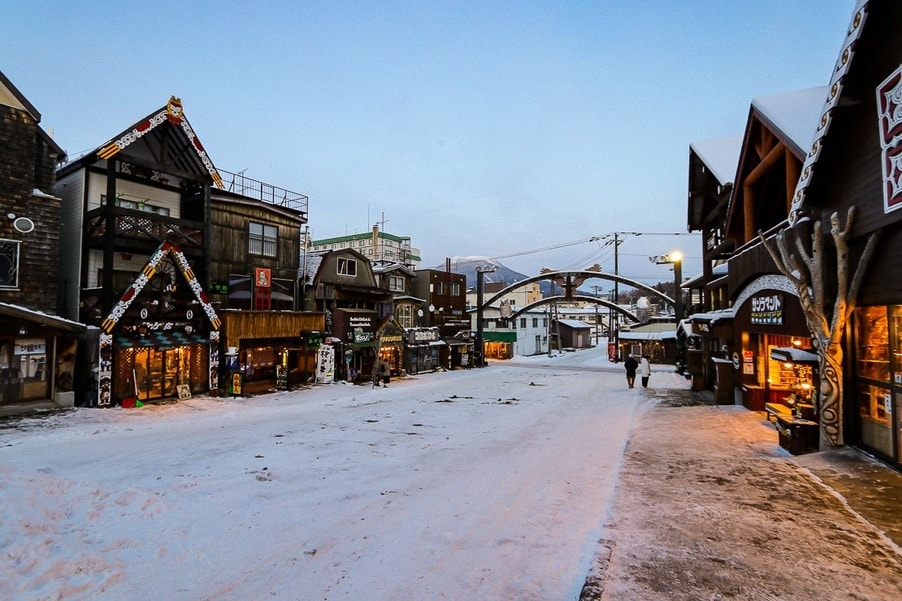
Warm lights in Akanko Ainu Kotan
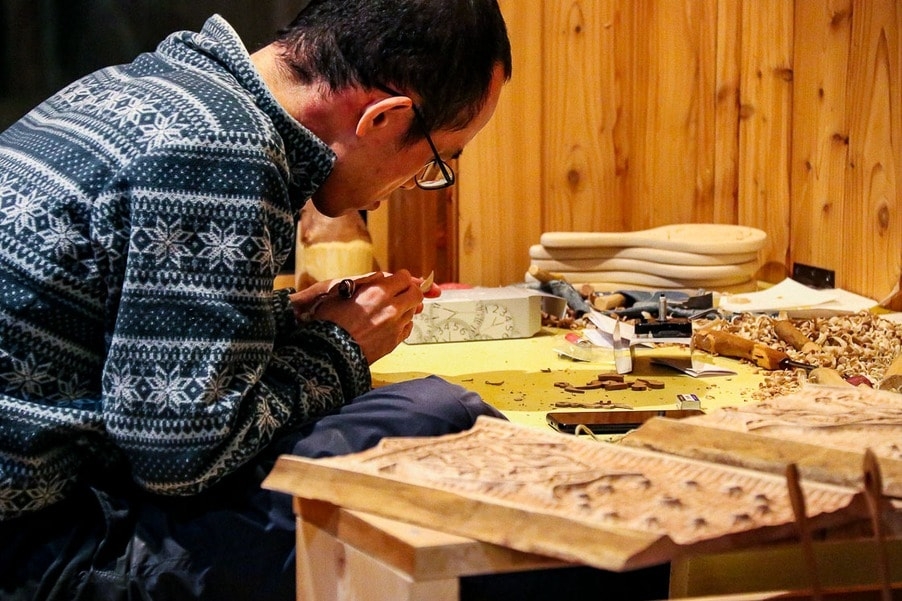
Woodcarver at work
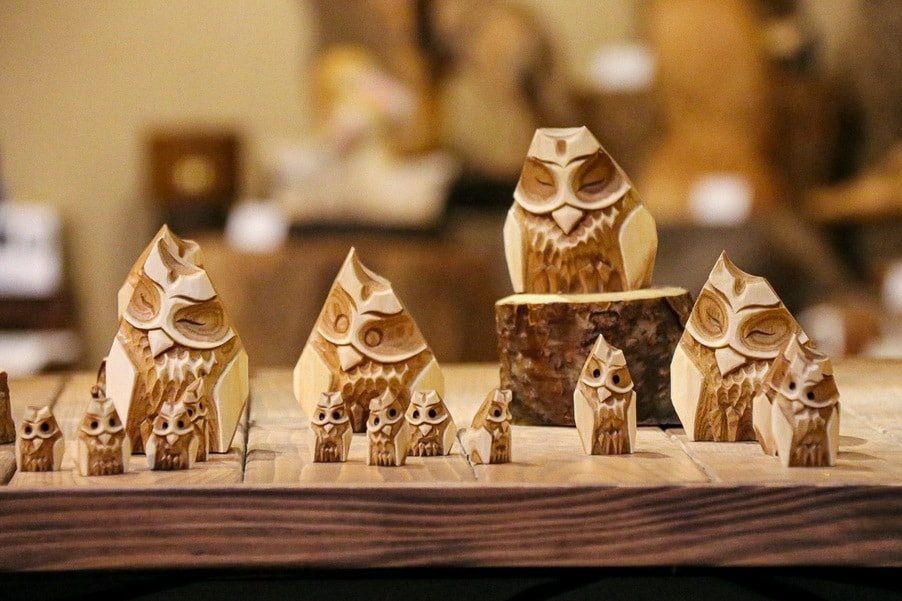
Owls are seen as protectors of the village, hence the owls at the entrance of the village
I took the opportunity to watch a series of ancient ceremonial dances and the Lost Kamuy shows after dinner. Needless to say, it gave me a whole new understanding of Ainu culture and impressed upon me the urgency to preserve this dying heritage. I would highly recommend a visit to the theater for those would like a glimpse into Ainu culture.
At the end of my big first day, I went to bed very content and satisfied with all that I had seen and done.
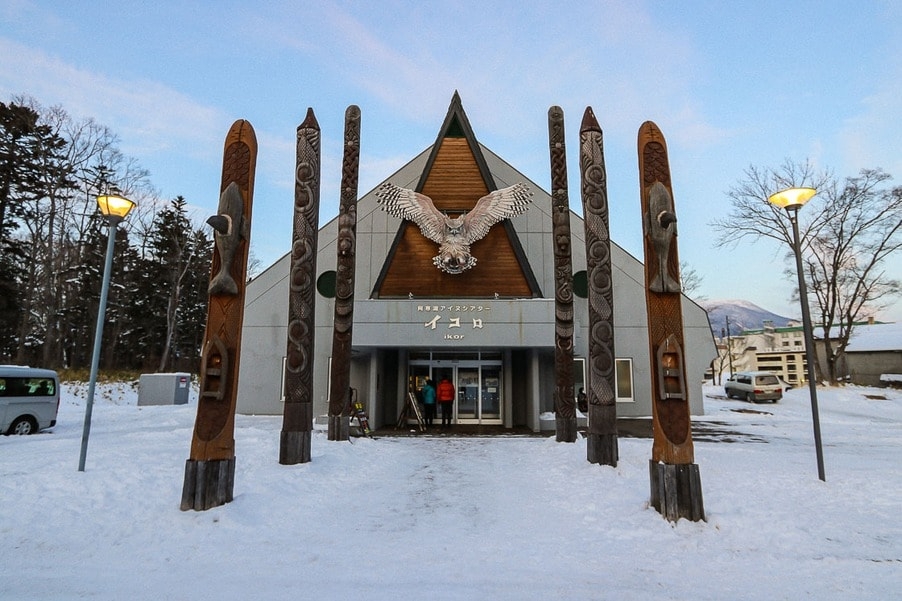
Akanko Ainu Theater <Ikor>
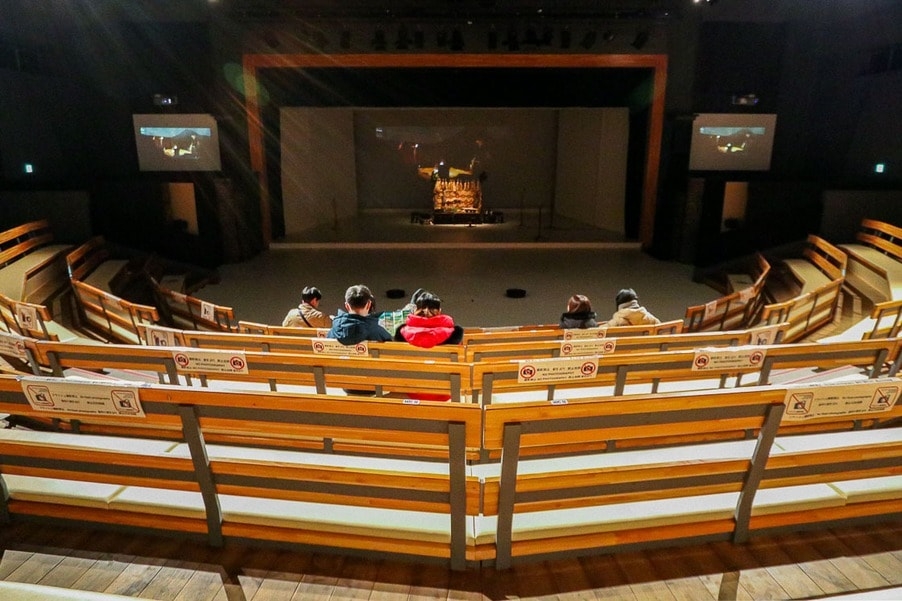
The theater is fairly large and can accommodate a lot of people

Traditional dance depicting the red-crowned cranes and their young dancing
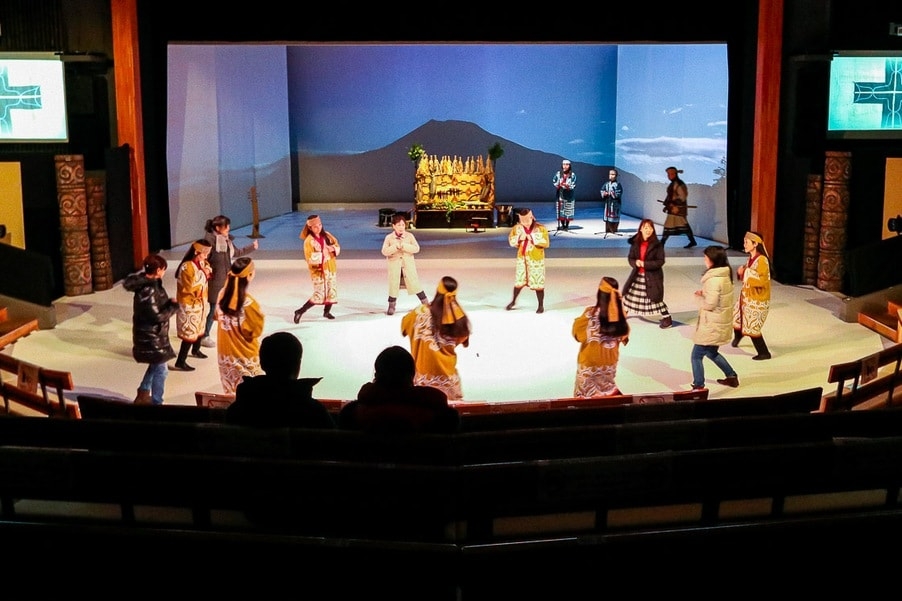
Guests are invited to dance together at the end as a form of blessing
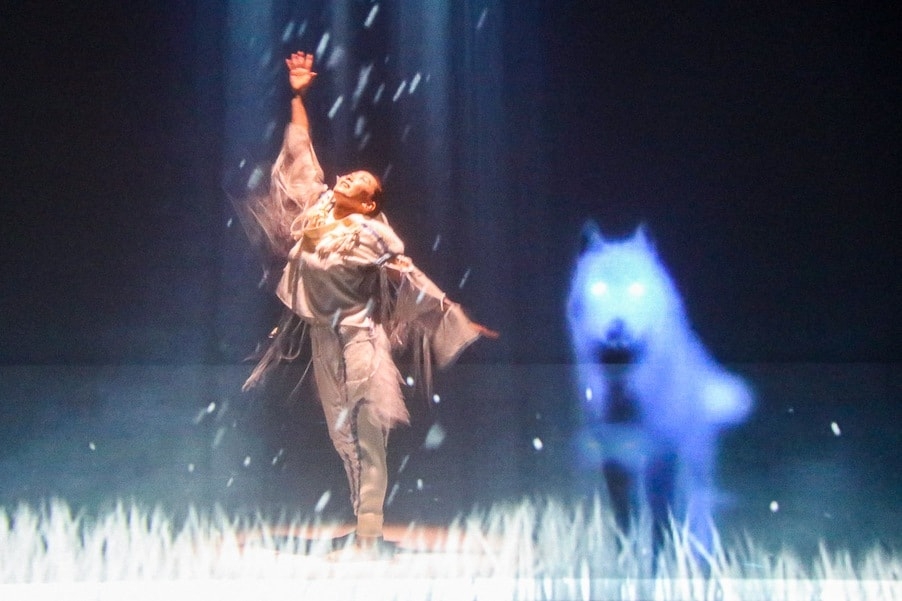
Interpretive dance and digital art
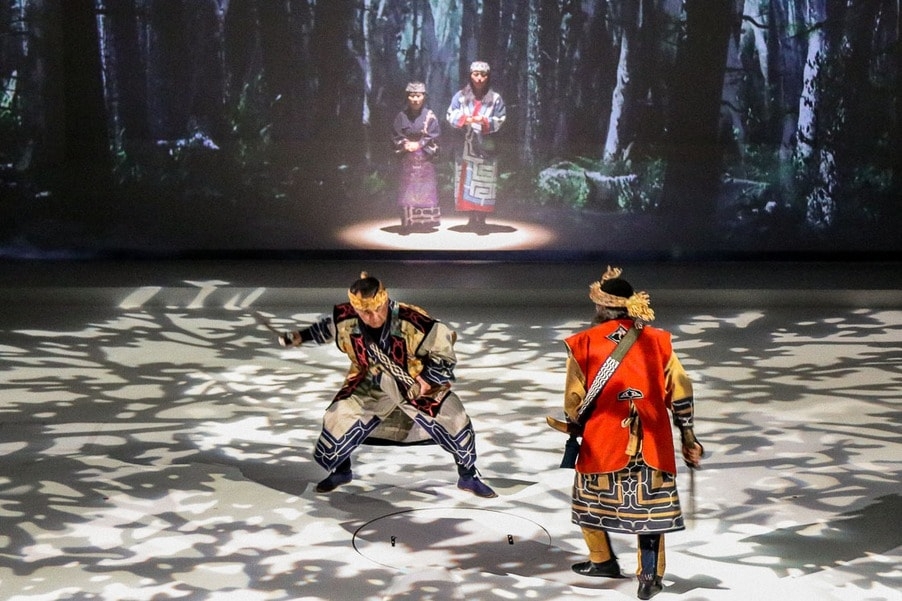
Singing traditional songs and performing a story (yes, the two people behind are real)
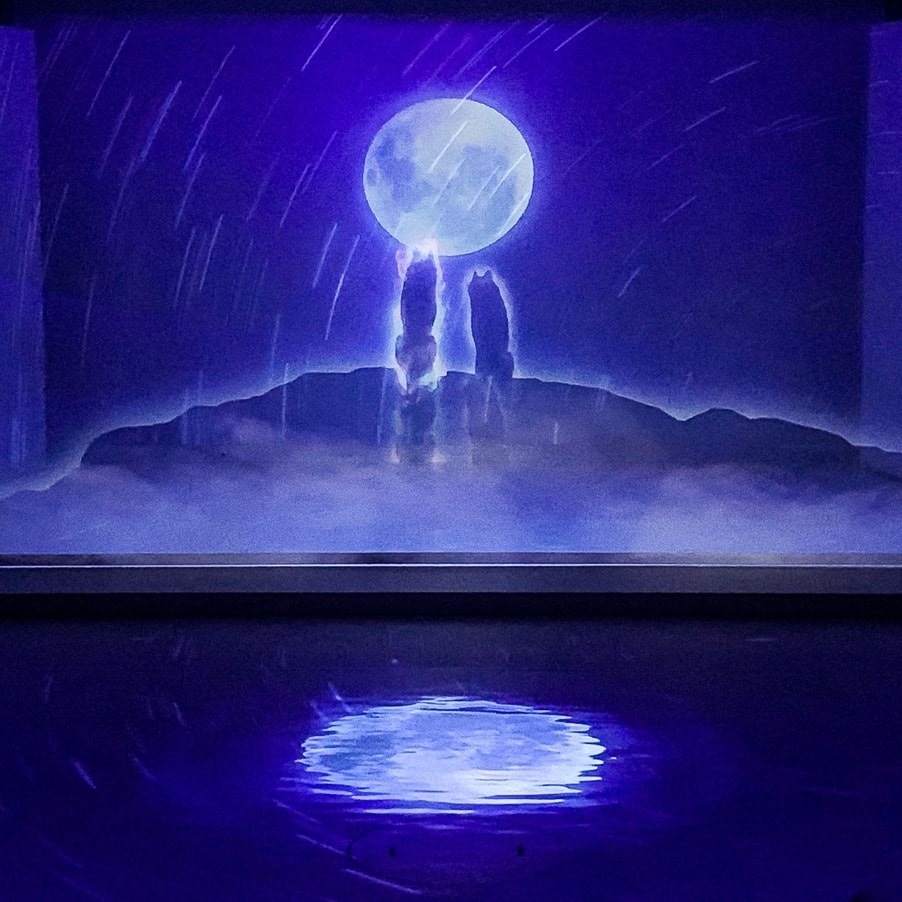
Kamuy means god, and the Hokkaido wolves that are revered and worshipped in Ainu culture are known as horkew-kamuy
Day two
It was still dark when the guide picked me and the other participants up from our hotel lobby. Note that warm gear is not provided, and participants should be prepared and suitably dressed to walk in the cold. We set off in our guide's car and headed for the trail not far from the Akankohan Eco-museum Center, which I would visit later.
The guide brought us through the forest along the shore onto the frozen Lake Akan itself. Along the way, I learned about the local vegetation. The one that caught my attention was marimo, an algae that grows in fresh water, and the ones in Lake Akan are the only ones in the world that develops into a sphere.
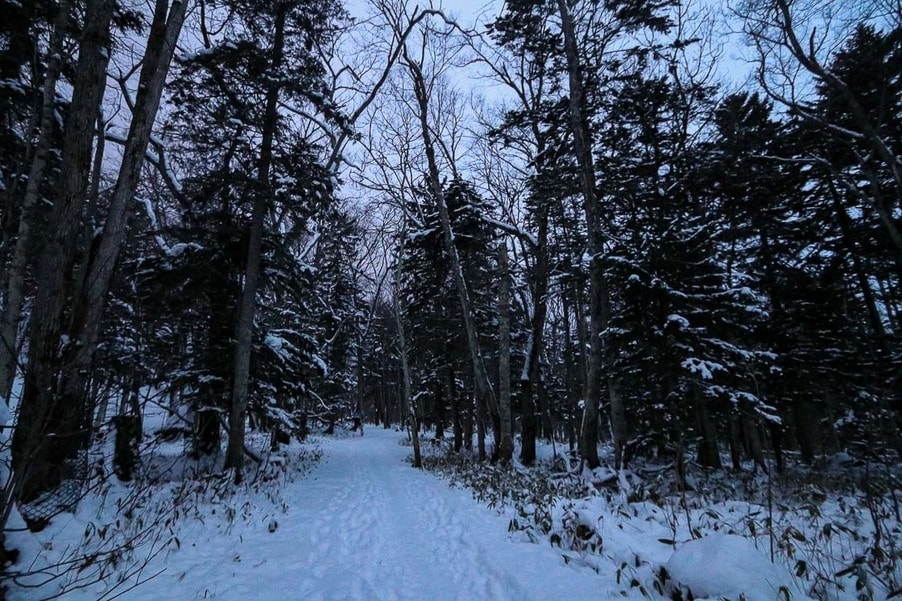
Walking through the forest at dawn
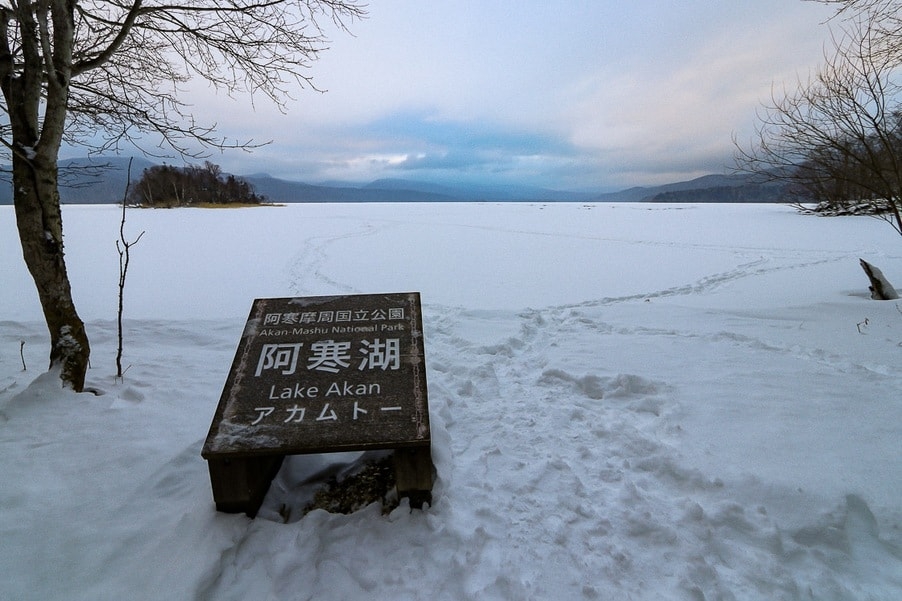
Lake Akan, and our path ahead
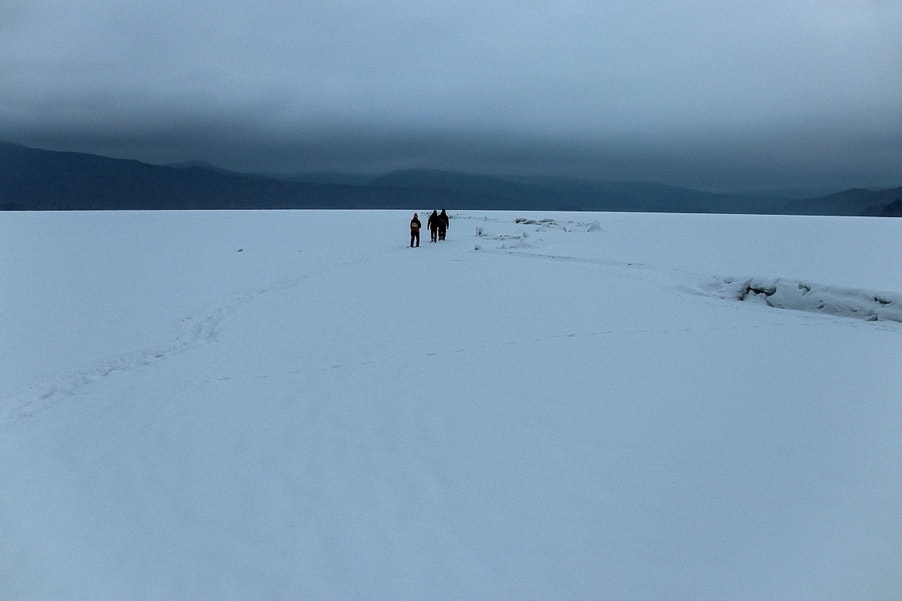
We walked about 200 meters over the lake

The author's footprints and a fox's footprints
However, what I did see on my approximately one hour sunrise walk more than made up for the lack of marimo. We got to see huge omiwatari, a naturally occurring ice phenomenon in which an upheaval of ice is formed when the ice on the lake expands and contracts due to temperature differences.
In addition to that, we also got to see frozen bubbles stuck under the iced lake, and a spectacular sunrise in spite of the cloudy skies. I would definitely label this as a successful sunrise walk.
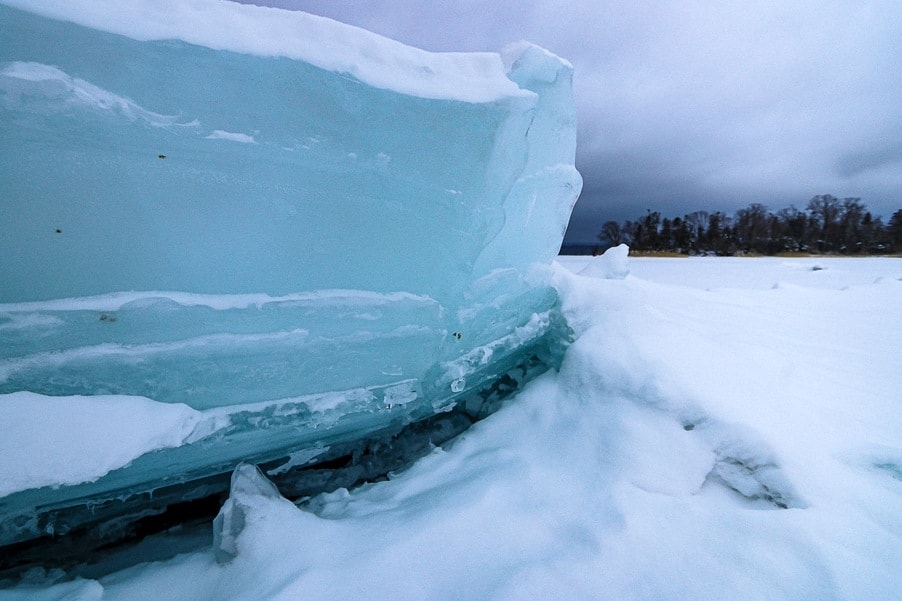
Massive omiwatari
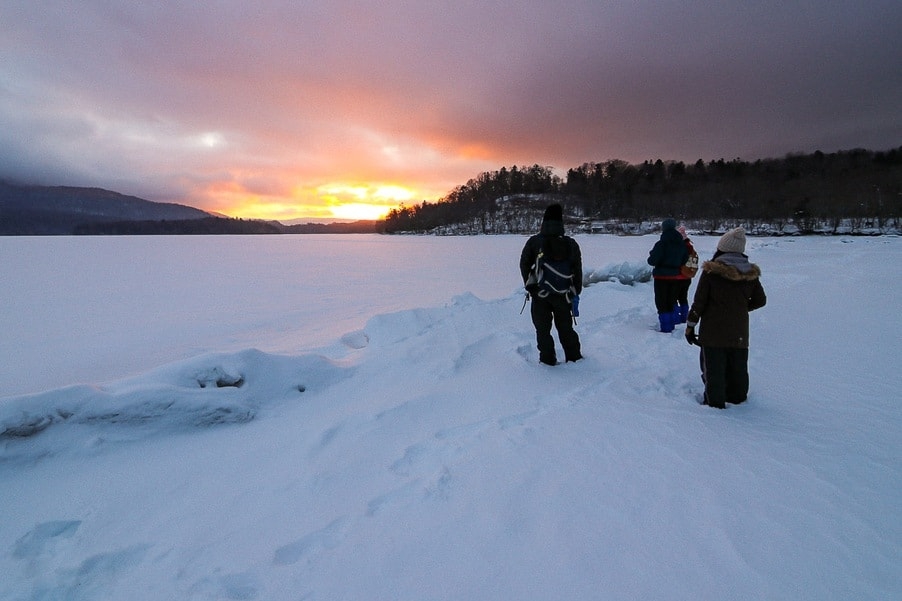
The early bird gets the sunrise
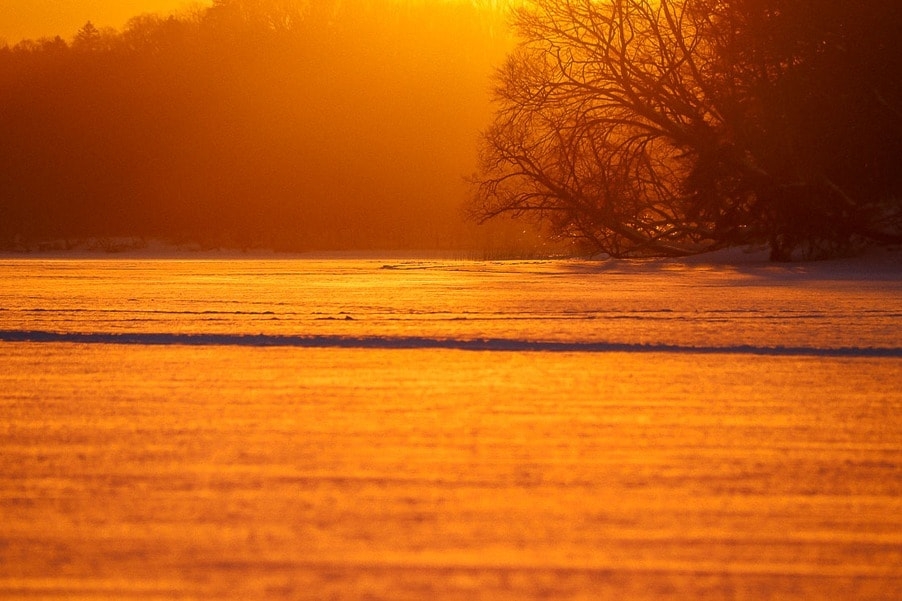
Orange sunrise over the lake
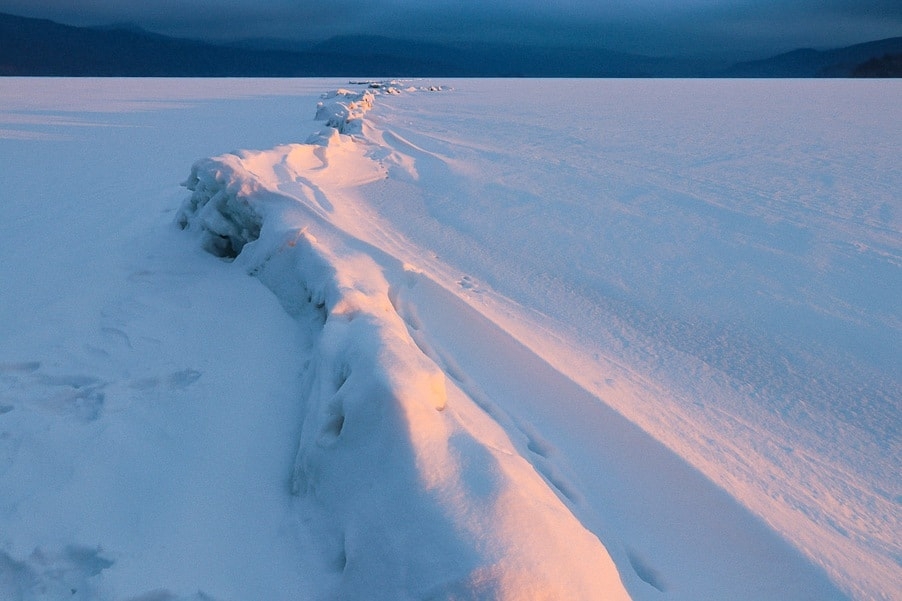
The line of uplifted ice, omiwatari
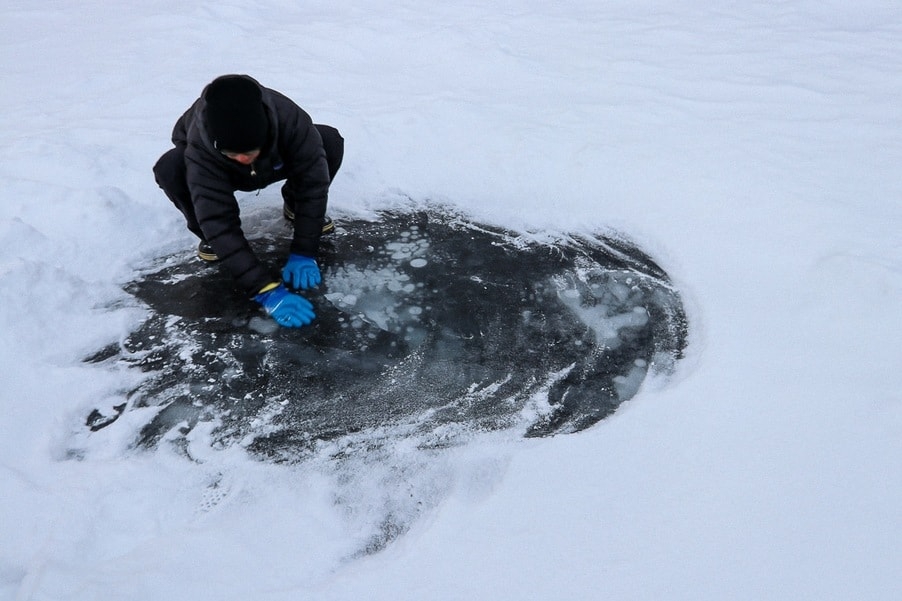
My guide clearing the snow off to expose the frozen bubbles

Frozen in time until it gets warmer
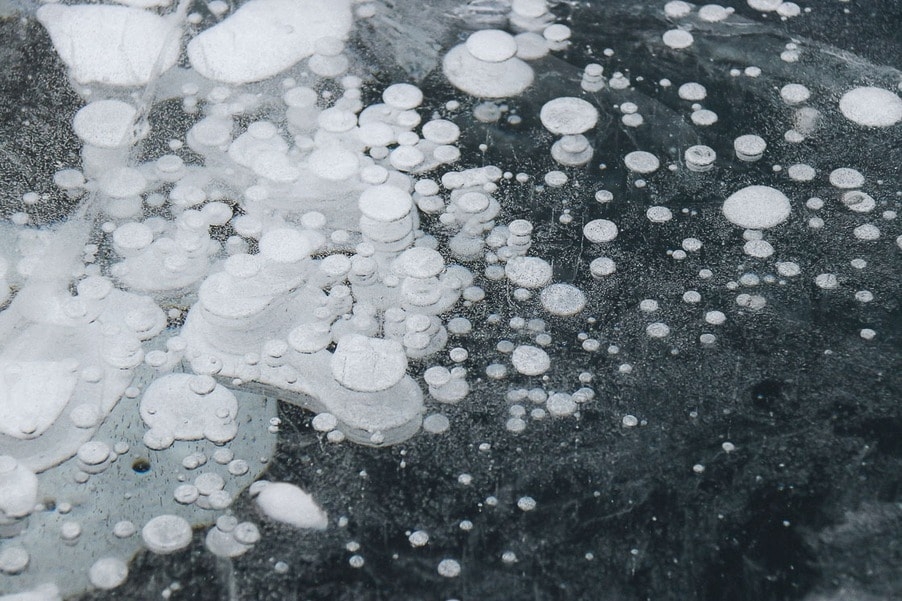
Mother Nature does surrealism

Trudging through the forest and back to the car
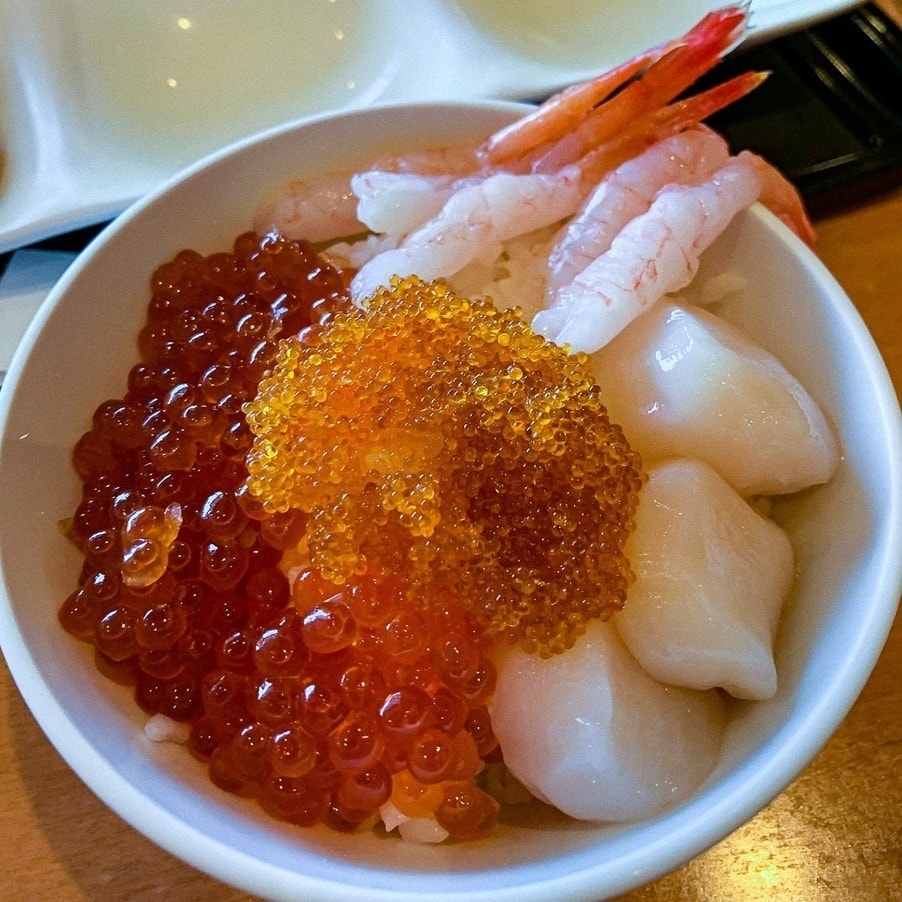
Can't miss out on local seafood when in Hokkaido. This was from the hotel breakfast buffet
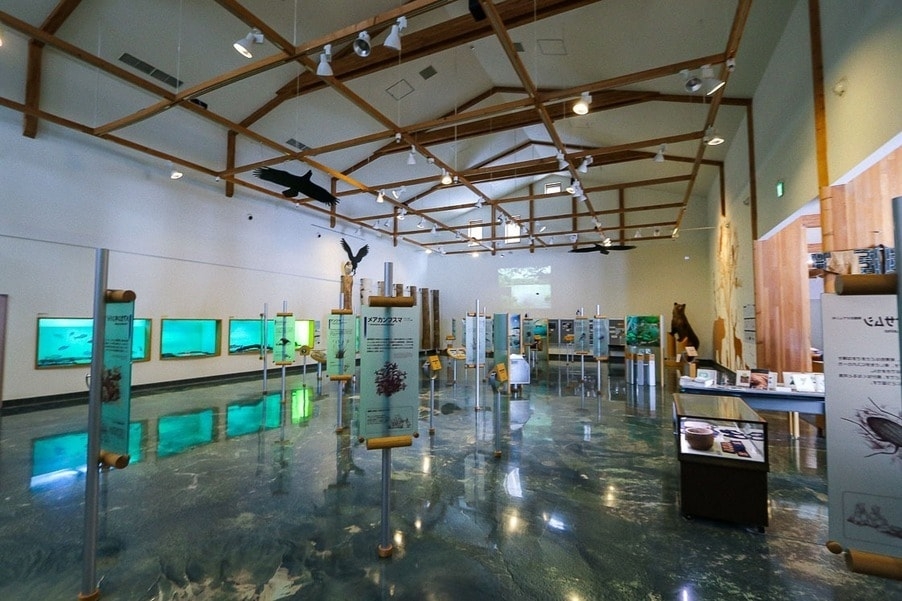
Interior of the Akankohan Eco-museum Center
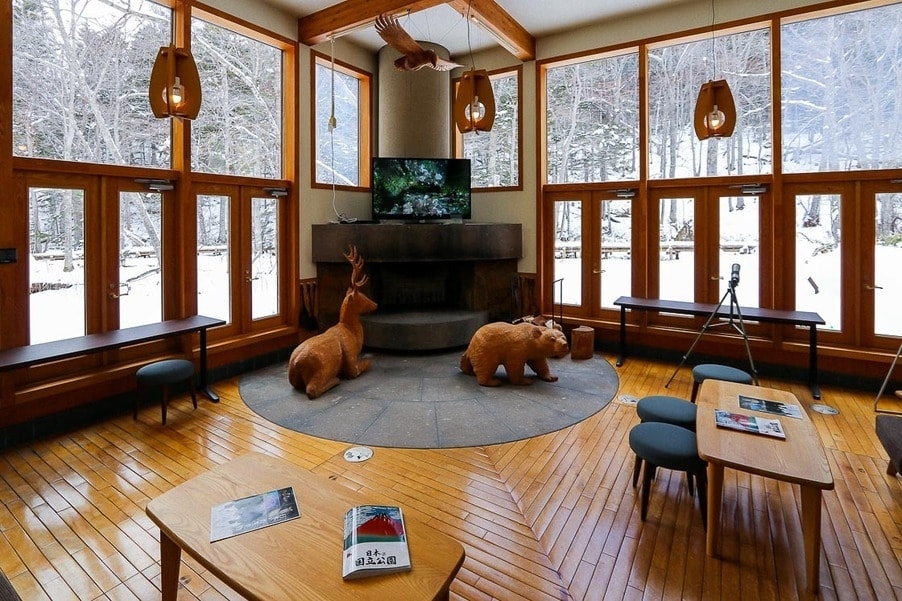
Look for wildlife in the comfort and warmth of this room
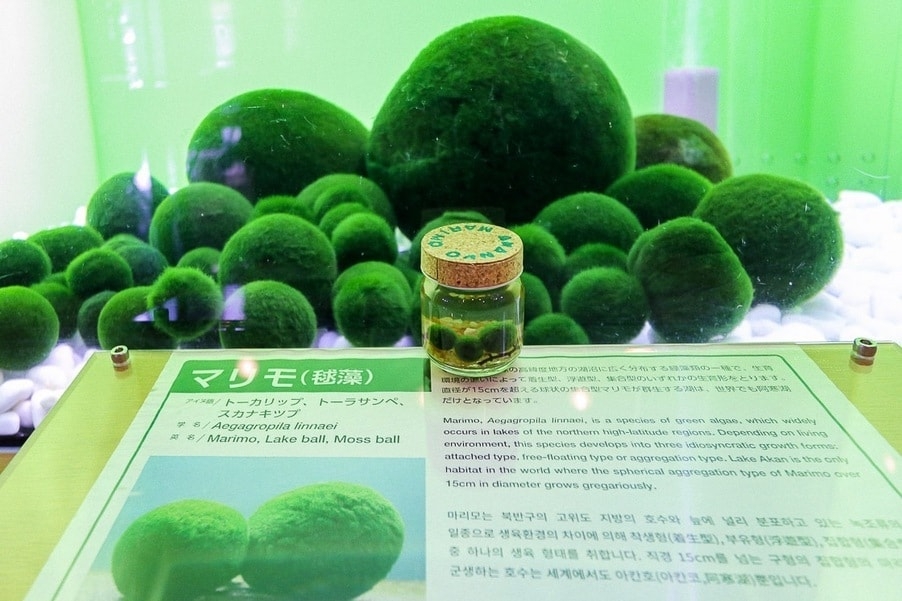
Large marimo in the tank behind, and my souvenir baby marimo, which I couldn't resist buying, in the bottle in front
I can safely say that this has been one of the most satisfying trips I have taken, and one which I would not hesitate to repeat. Despite the seemingly long first day, it was actually very manageable, and I had plenty of time to explore the Akan-Mashu National Park. Next time, I plan to visit in a different season for the different scenery, although I have to admit that "the cold never bothered me anyway", and winter in Hokkaido will always have a special place in my heart.
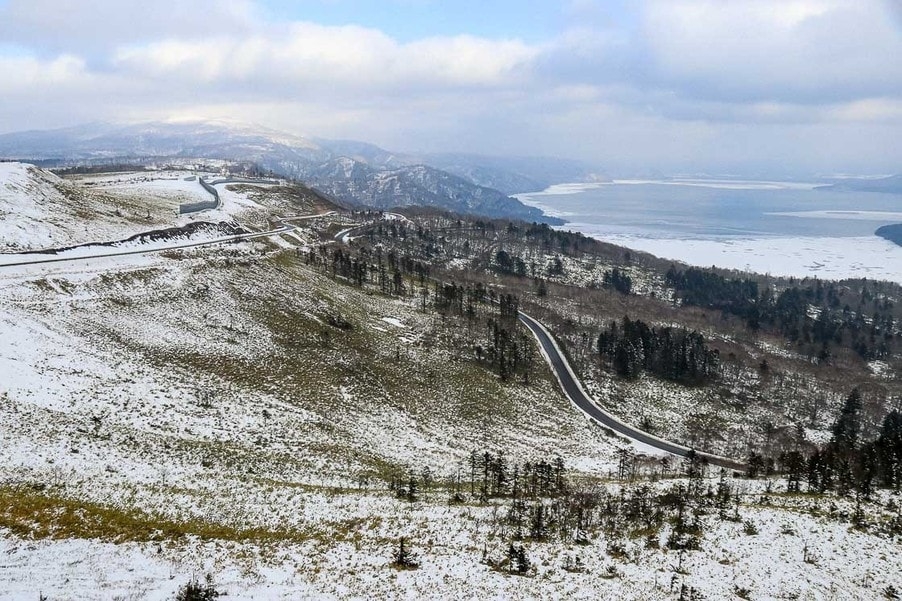
Climbing up the winding road to Bihoro Pass
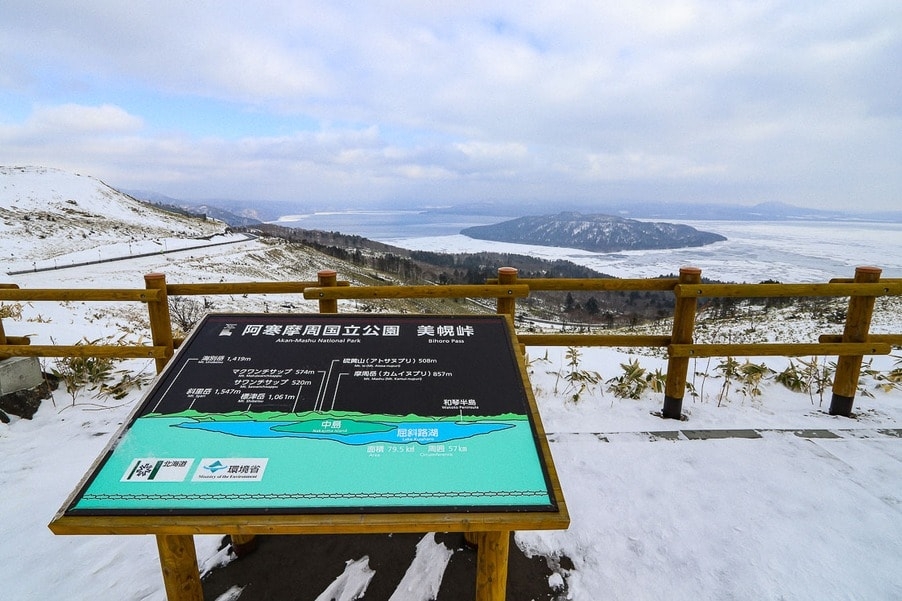
The observation deck affords panoramic views of Lake Kussharo and the islands inside it
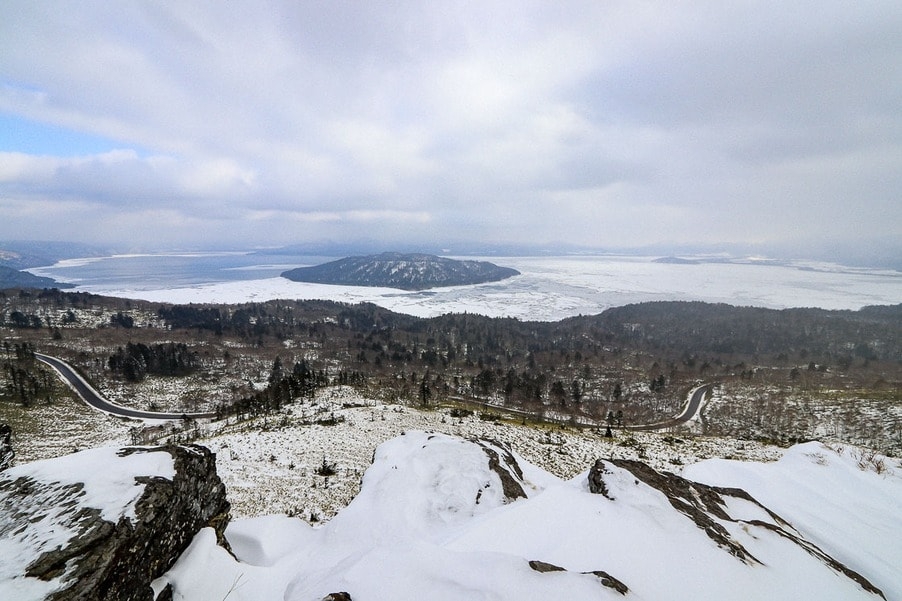
Lake Kussharo and Nakajima, the island in the lake
Access
Rental car outlets can be found at the nearby airports, and the cars come fitted with winter tyres during the snow season. It takes about 70-90 minutes to drive to the Akan-Mashu National Park from either one of the three airports.